Sounds of the Earth: Jayda G and Louis VI on climate activism and how to achieve change
Grammy-nominated producer Jayda G is joined in conversation by zoology graduate and rapper Louis VI to discuss Blue Carbon, her new documentary that brings music and science together to highlight the climate change crisis.
By Nick Reilly
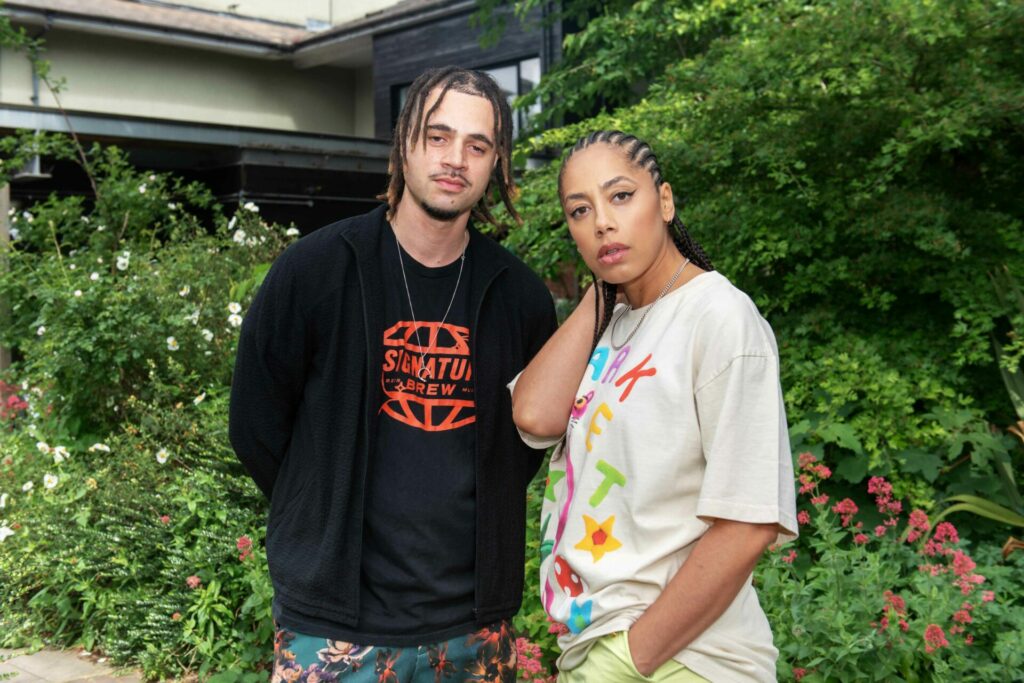
In 2024, the worlds of music and climate change activism seem like the most natural of pairings.
Communities like the pioneering Music Declares Emergency have come together to shine a light on how to improve the gas-guzzling nature of touring the world.
On top of this, ambient pioneer Brian Eno was a key player in Nature being listed recently as an artist on Spotify, with all royalties going towards Eno’s Earth/Percent charity, which supports climate action initiatives across the globe.
There are few musicians as versed in this world as London rapper Louis VI, a zoology graduate and self-described nature geek who has worked closely with Eno on the Nature campaign. “I think Covid was a big time for a lot of people to look at what they were doing, and my sister was a big part of saying that you need to combine your two loves — rap music and nature — and become the biggest geeky version of yourself,” he recalls. It led to Louis writing and narrating the film The World Is (Y)Ours, released in 2020, which explored how actions in Western countries can negatively affect the ancestral homes of Black and ethnically diverse communities.
It’s a similar situation for Grammy-nominated producer Jayda G, who just so happens to be an environmental master’s graduate, with a focus on environmental toxicology. This is a key component of her new film Blue Carbon, which unites “music and science to uncover why listening to nature, and to each other, is key for averting climate catastrophe”.
An east London café with its own luscious garden feels like the perfect setting for this meeting of minds to take place, as both artists discuss their work and the unique position of being two musicians fighting for the world to wake up to the realities of climate change.
Louis: I don’t know if you remember, but we first met at COP26. One of my close friends was on the same panel as you.
Jayda: I remember, but God that seems so long ago now!
Louis: It does, but it’s great to meet you again. I wanted to ask firstly, what made you want to write a film?
Jayda: Well, it’s funny, actually, because I’m known as a DJ and producer, but I’ve been incorporating my science background into my music since the beginning. I released my first remix in 2016 and I always wanted to marry my music and nature together because they’re my first loves. My first album was an ode to my thesis at the time, too. It was a risk assessment of several different chemicals and their health effects on killer whales off the coast of Vancouver. At that time, I started doing a small talk series called Jayda G Talks and through that I would interview young scientists. It allowed me to realise that I wanted to keep putting music and science together, but I didn’t know how.
Then I was approached to make this film, and we started production during Covid but didn’t start filming until 2022. It was a long process of trying to put the film together, and it’s nice that it’s really out.
Louis: It was so interesting to watch because with Blue Carbon you’re introducing people to a concept that a lot of laymen probably don’t know about. The need to sequester carbon and the need for those marine and land spaces for that to happen seems quite dramatic. It could be quite doom and gloom. But I think you managed to create a film where you’re approaching a serious subject, but the music and yourself as a presenter mean that the audience can be pulled into it. Was that a conscious choice to change tactic and make it a little more approachable?
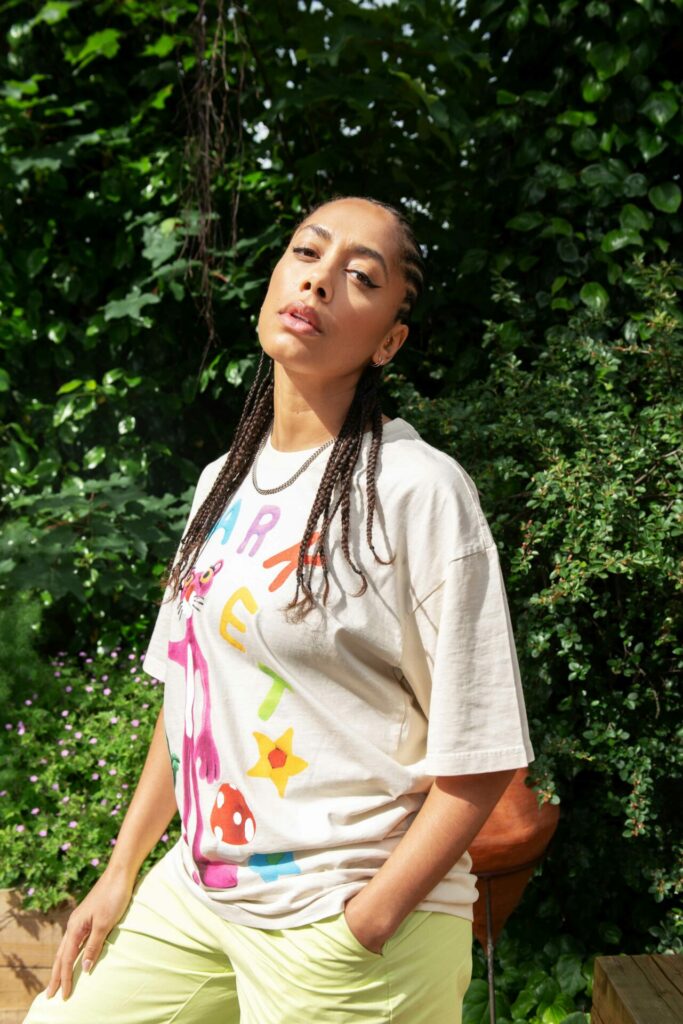
Jayda: Yes, that was the foundation of the film from the beginning. We knew that this was going to be a film about hope. We wanted to showcase things that were positive and happening in the world to help us fight climate change. So there were a lot of questions asked by the director about what makes ‘you’ hopeful.
There’s this book by Brené Brown called Atlas of the Heart, and it’s basically a dictionary of emotions. She describes hope as being three things: when you have a goal, and you have a pathway to that goal, and you have agency to achieve that goal.
Once I got those three things, I realised that’s what the film was about. We were showcasing all these different people who care about their environment because they had a goal and were able to reach it. The ability to believe in yourself and have the power to actually do what you’re setting out to achieve can be really powerful in terms of galvanising people when it comes to fighting climate change.
Louis: I think there was something really special in the way you both told it in the lens that felt very non-colonial as well. It was interesting that each place you went to, these people had the agency and you let them explain and be the experts. There’s a scene in Vietnam when you see the before and after picture of Agent Orange and the herbicide. That’s one of the most violent things I’ve ever seen done to a place. Why did you approach it in that way?
Jayda: I find that when you’re studying science, there’s an openness, at least that was my aim of looking at the data. It’s trying to tell you a story, and there’s a level of openness that happens with that. That was the approach I was trying to take where I’m not the expert; I’m just there to bear witness and I think that gives space unto itself. It also allows people to speak for themselves and tell their own story, which I think is much more powerful than if I’m telling their story for them.
Louis: It feels like you allowed sound to do that as well.
Jayda: That was the aim, especially because the basis of this film was again to put music and science together. How do we bring music into this film in a way that isn’t forceful but makes it more like a piece of art? This was the extension of that.
Louis: Hats off to you because as a musician and a zoologist, I couldn’t find a way to bring them together at the start. I always wondered how they’d manage to market a rapper from London who knows about hymenoptera and social insects but they don’t ever intertwine.
I think Covid was a big time for a lot of people to look at what they were doing, and my sister was a big part of saying that I need to combine my two loves — rap music and nature — and become the biggest geeky version of yourself. It was an effort, but I brought nature sounds into my last album. How did you manage to find a team that could support both sides of you?
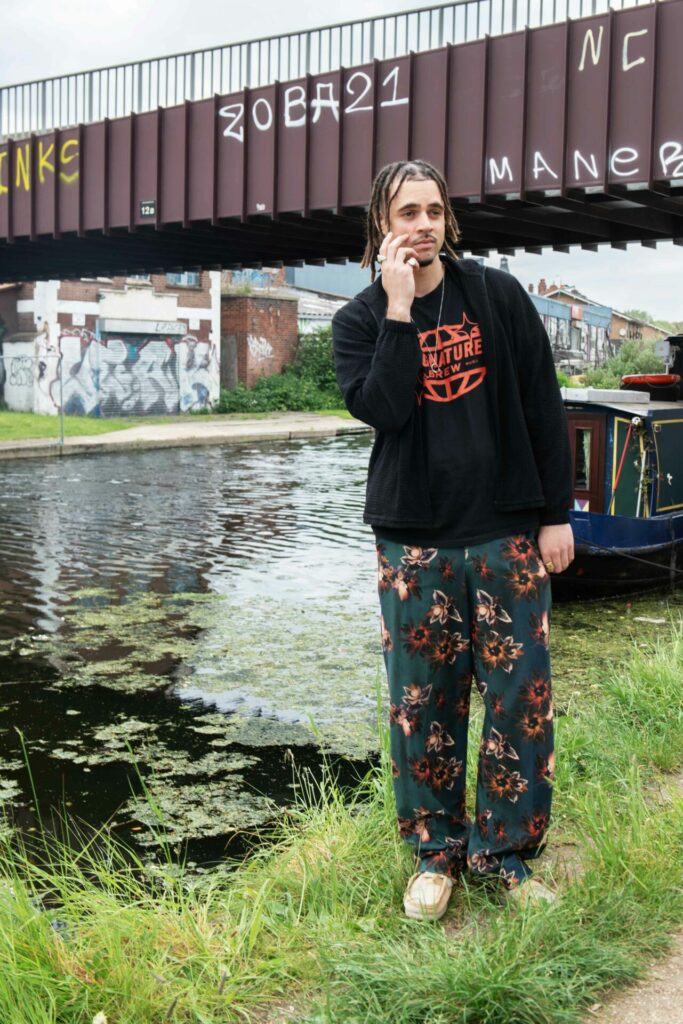
Jayda: It helped that the director Nicolas Brown still loves music and is wowed by it as well. And so that helped out immensely. We could have those kinds of discussions very easily. And he really helped with moments like the bit when we meet those musicians in Senegal and Nicolas asked them to write a song about nature there and then. He returned the next day and filmed them singing this song from the heart. That was amazing.
Louis: Did you have a favourite musician you met?
Jayda: Well, I loved meeting Seu Jorge. When I saw the concert, I realised I knew all his songs, and it was beautiful to see him talk about nature too. The intersectionality within that, you have this older musician, he’s not from our generation, and it was nice to see someone of that kind of stardom too who understood the cause and what we’re trying to do and actually cares about it. He was a genuine person, he’s super normal, and it was easy to speak to him and bond with his family.
I also loved meeting the singer and guitarist in Vietnam, too, because he reminded me of the blues and jazz music that I grew up on. We ended up making a connection between the blues and water and marshlands and it was a magical moment just personally.
Louis: I feel like it also represented a story where it was hinted that music and nature isn’t something that’s separate and our ancestors have been using music as a muse forever.
Jayda: That’s interesting. I also found it helped having a team that trusted my knowledge. You know, I did 10 years of academia, I can bring that to the table. It was important to have a team that believed in me as an artist.
In academia, it can be tough when it’s its own little world that is behind closed doors and there’s a lot of old dudes talking to each other about the same shit they’ve been talking about forever. It’s not very open to bringing new individuals in, and I got every disenchanted in that world. I realised that in a lot of ways I was too different for it, so I took a hard right and went into music, but I found that that has allowed me to serve the things I believed in when I went into science in the first place. Can you relate to that?
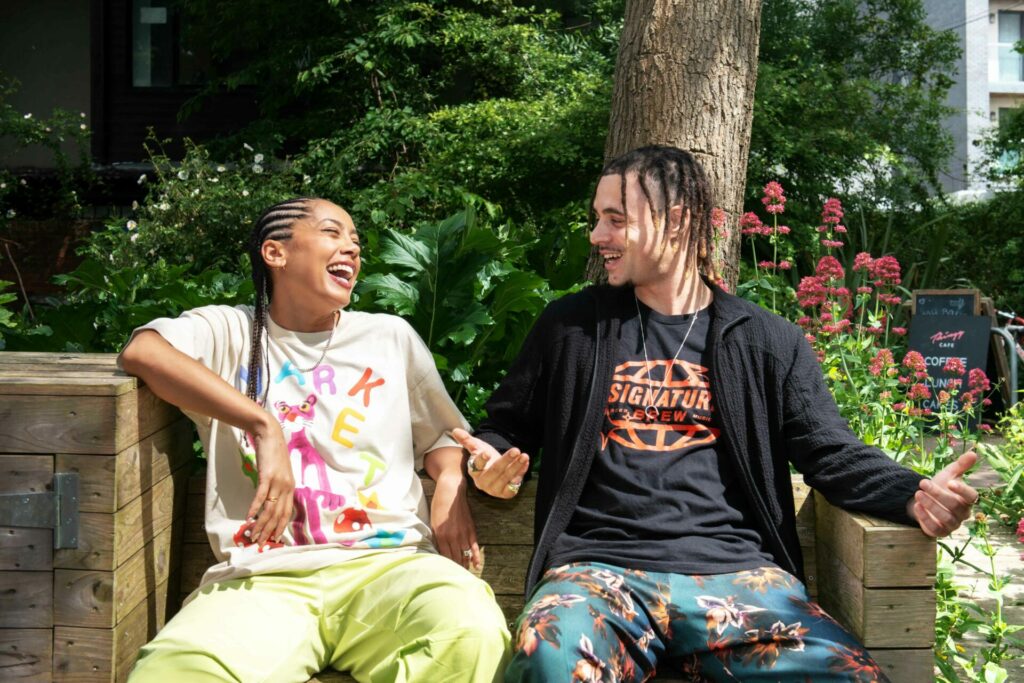
Louis: Yeah, I finished a zoology degree and I didn’t do a masters like you, but I found it to be a very blocked system. Like you, I took that hard right into music and it’s been a beautiful journey, being able to bring that love back and that geekiness back through a different avenue in a way that actually maybe is more digestible for people that need to see it.
I also wanted to say thanks for making the film because it was amazing to see a person of colour talking about this stuff because that’s very few and far between. I was doing some research and found that just 4.8 per cent of environmental professionals are people of colour. That’s wild to me because these are the people who are going to be affected when sea levels rise and temperatures change. I think about this all the time — the intersectionality of social justice and environmentalism and how those two are so closely intertwined.
My dad’s side of the family is from Dominica and it got obliterated in 2017 by Hurricane Maria. This is a place that’s being affected on the frontline of climate change when they’re not responsible for it.
I was also in Sri Lanka when the tsunami hit in 2004, and what’s been amazing about that is that I met this woman who’s part of a project to build mangroves all across Sri Lanka, because it’s not just an incredible way to sequester carbon, but also a way to protect from coastal erosion, flooding, hurricanes and tsunamis.
It was really interesting that you touched on that in the film and explained that we’ve been taught that these places should be tamed, destroyed, or have no value as they’re full of mosquitoes, midges and disease. Whereas the irony is that the western lens might be wrong, and these places could be the things that save us.
Jayda: Well, again, I can’t take too much credit for that in the film. It was the production company that told me about blue carbon, and it was funny because I’ve worked in so many random places and in a lot of marshlands getting up close with lizards, being in muddy water, bitten by mosquitoes. It felt like a natural fit, because I had done a lot of background research on wetlands when I was an academic and understanding their ability to sequester carbon and how they can help with that. I was just such a nerd for it and I always wanted to be around animals too. To put myself in these dangerous situations!
Louis: What’s the craziest field experience that you’ve had?
Jayda: I used to catch rattlesnakes! I was an undergrad student, helping a master’s student with her project looking at a population of rattlesnakes in Canada because there was a highway being put in, and we needed to see if that could cause the genetics of that population to diverge.
The majority of the shit you do in field biology is so cowboy style. I remember having a rod with a hook at the end and you’re walking through chest-high grass listening to see if you can hear a rattlesnake. You dig for it, and then pick it up with the rod and just pull it to an area of cleared ground.
You fling it over — and it was just me and two other girls — and we’re all surrounding the rattlesnake and pinning it down and putting it in a pillowcase. You’d then have to coax it into a tube at lightning speed to measure it and takes its blood. It was so fun.
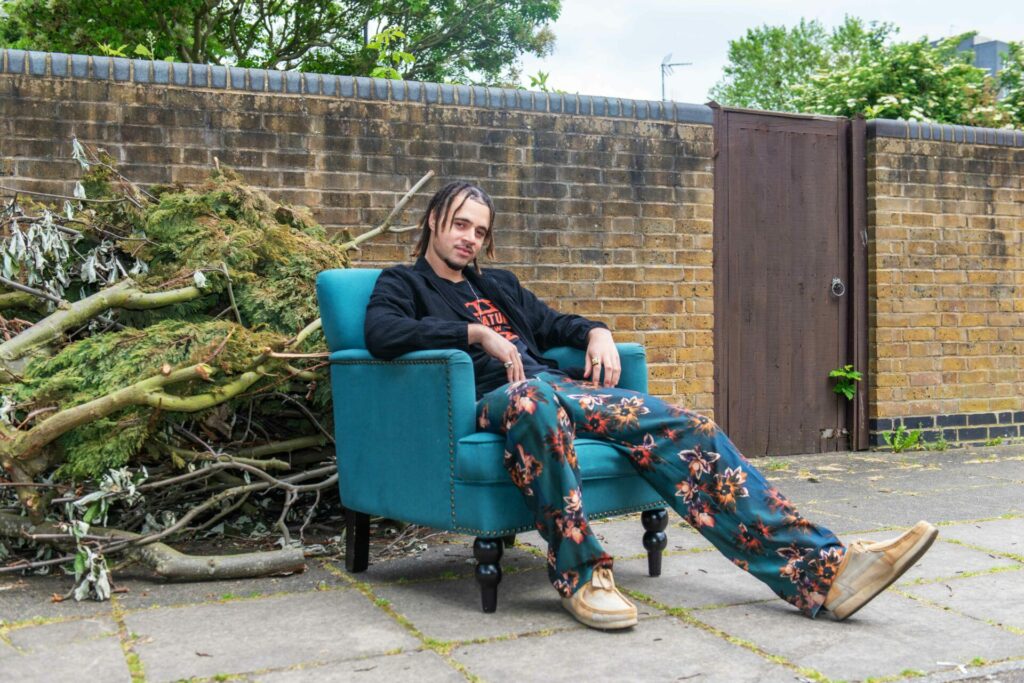
Louis: That’s some people’s nightmares, but I’d love that. Nature has always been my thing, and it’s almost weird because I grew up in London, not around much. The UK is one of the most nature-depleted countries on the planet. I’ve always been so disappointed there’s nothing that can kill you out here! People go “Are you mad?” and I think I’d like the surprise of growing up in Canada, where you’re from, where there might always be grizzly bears.
Jayda: It’s cougars in my area, but the thing with them is that by the time you know there’s a cougar, it’s usually too late! We all do bear protocol stuff though; we all have our own bear spray.
Louis: Even that, I’d be so gassed! I think there’s a healthy level of fear that humans need to have that enables respect for nature. I wanted to ask your opinions on the carbon credit system, where businesses can buy credits to offset their own emissions. Did you feel a responsibility to address that in the film?
Jayda: That was really interesting because it’s really complicated to dive into that system in a way that could fit in a 90-minute film. But it’s definitely happening and it’s motivating investors in a way that could be really positive or really negative. We were trying to show it in a way that showed both sides of the story. In the film we see Kareem in Senegal who is planting these mangroves and you find out he’s being paid by a company called We Forest, which represents Shell.
There is a dark side of the system, where companies basically pay peanuts to plant mangroves and they get to keep polluting and doing the things they’ve always done. The other part is that you do have communities that have the agency to only let people invest in them if they have the same value systems as them, so they aren’t taking money from big conglomerates when they don’t get a seat at the table.
There’s actually a vetting system in place, too, which allows communities to check who is investing in them. The other cool thing is that the carbon credit system is holistic because people get investors putting money into their community, but that money goes directly to the people, to schooling, to them being able to upkeep their home in a way that is conducive for the mangroves to live and thrive.
It can be frustrating because when you immediately label something as bad, you automatically cut off a whole slew of opportunities that actually could be good. If the carbon credit system is done properly, it could be the biggest transfer of wealth from the western countries to developing countries. If we get it right.
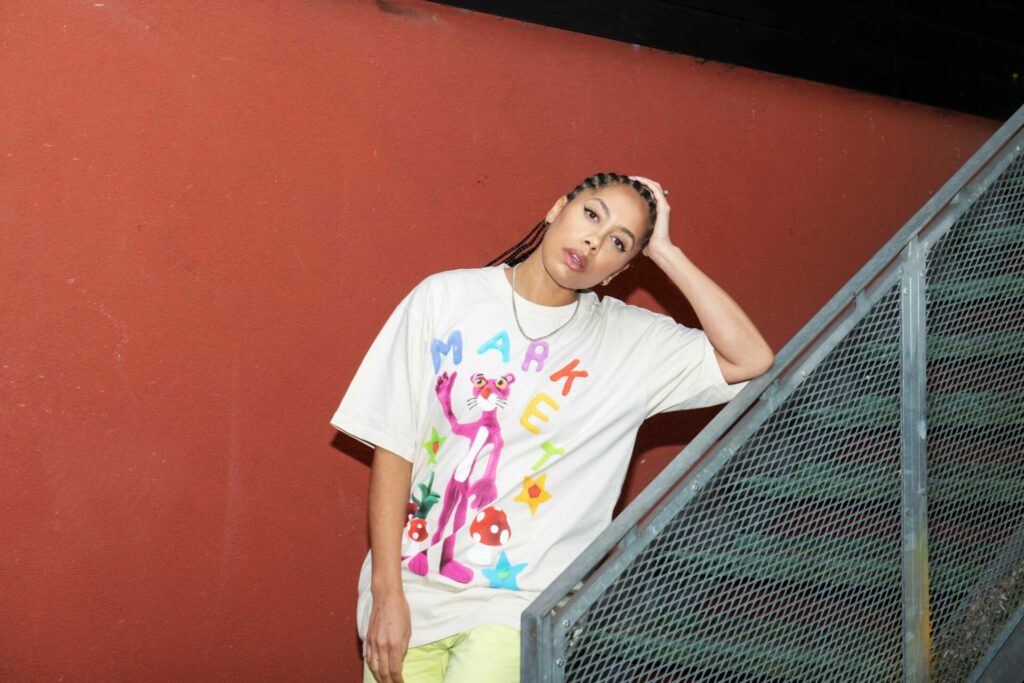
Louis: It’s interesting because I work with Brian Eno on his Earth/Percent charity and something that he says a lot, which I love, is “It’s not gonna be a clear route to the finish line. It’s gonna be messy, go back and forth and be squiggly.” But you’ve got the belief that it will grow in the way that real things like mycelium grow! Another thing I believe is that if we stay in our echo chamber, we’ll die in our echo.
It’s about going to the people that are on the fence and the people across the divide. The people in the middle always make up the majority, and they’re the people that need to be persuaded by talking and making films like this, which talk to people of colour, people of the diaspora.
I think where we win in this is where we realise that the communication comes from feeling. You’ve made something that has a lot of feeling, emotion, while also bringing the facts that a lot of people with connect with. I think that’s genius.
Jayda: Did you notice that with so many of these communities, it’s always the women that are taking care of it. We should be ruling the world because you guys fucked it up! That moment with the Colombian matriarch in an insane hat — just put her in charge of everything. She is such a matriarch and so strong, and I love the moment when we’re in a canoe, and there are these super macho guys with machetes cutting down trees to clear canals, and she’s just shouting out orders!
Taken from the August/September issue of Rolling Stone UK. You can buy it here.
